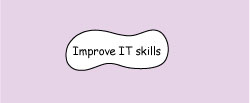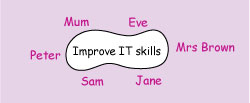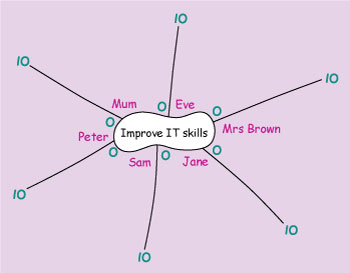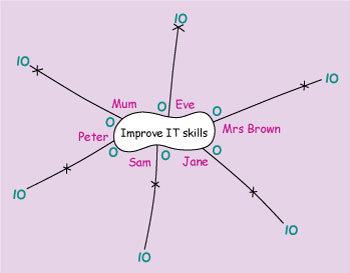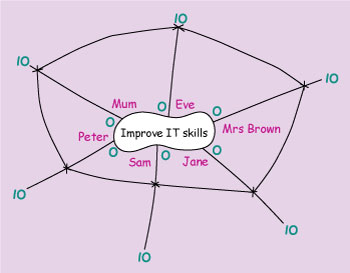3.1 Exploring your personal networks
In the previous activity, you mapped out some of the key people in your networks and identified them into strong or weaker ties and those who you might potentially reach out to. However, it’s not always so easy to pinpoint who would be the most useful people to support you in which way. In the next activity, you will look at a more functional approach to using your networks.
Activity 4 Taking a functional look at your contacts
Let’s examine in more depth how you can use your current network of contacts more smartly. You will need a sheet of paper and a pencil; alternatively, you could do this activity on your computer.
Step 1
Think of a current situation, problem or challenge in your life; for example, ‘I need to improve my IT skills’ or ‘I need to reorganise my childcare so that I have more free time for job search’.
Note this down in the centre of your paper like this:
Step 2
Now think of all the people you know, or know of, who could help you to address this issue and write their names down like this:
These people might help by recommending a course, giving you coaching, telling you about their own experiences, lending you a book, and so on; they represent a subgroup of your personal support network. Sometimes, it can be useful to include organisations in your networking, but in this exercise you are focusing on people, so please only include named individuals on your page.
Step 3
Next to each name, draw a line and make this into a scale of 0 to 10 by noting the numbers 0 and 10 at each end of your line, like this (0s should be in the centre of your diagram and 10s around the edges):
Step 4
Now, for each person, place an X on this scale of 0–10 (where 0 = highly unlikely and 10 = extremely likely) at the point which you believe reflects that person’s willingness to help you, or the likelihood that they will give you the support you need, like this:
Step 5
Join up all the Xs as shown, and look at the space that you have created around your problem:
This space represents an area of opportunity and resources that you can tap into. Look at areas where there is little space around your problem (like the lower part of the diagram above). This is where your personal support network is weak.
Step 6
Think about any weak parts of your personal support network and how you might strengthen them. Write a short list of actions that will help you to strengthen your contacts. These might include making a phone call, attending a meeting or offering to help someone else out.
Remember that networking is a two-way process. Be generous in your support of others and they are likely to reciprocate when the opportunity allows.
Listen to Barbara describing how she has maintained her networks.


